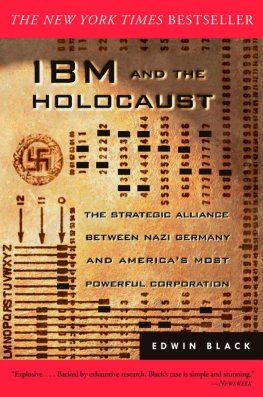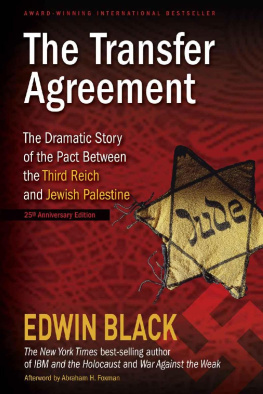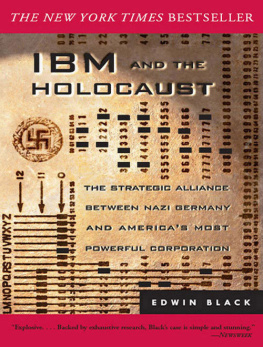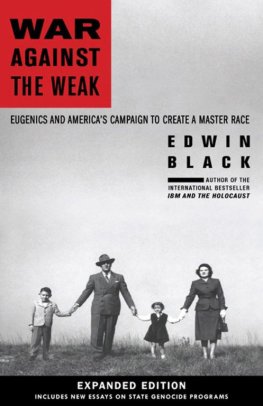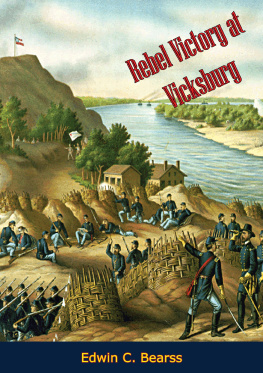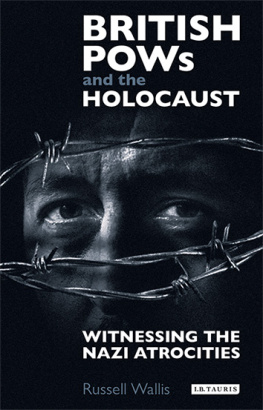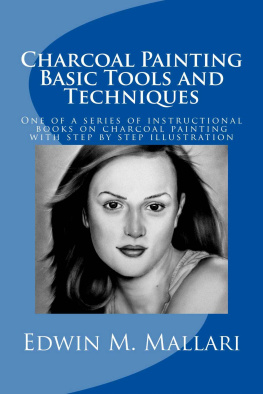Edwin Black
IBM AND THE HOLOCAUST
The Strategic Alliance Between Nazi Germany and Americas Most Powerful Corporation
TO MY DAUGHTER, RACHEL,
who will read this book,
AND TO SIX MILLION
who will not.



RARELY DOSE A BOOK OF HISTORY INVOLVE SO MANY DOZENS OF PEOPLE who were so important. But this one does.
Because this investigation involved documents in so many countries and in so many languages, I relied on a network of researchers and translators, many of them volunteers. The team consisted of Holocaust survivors, children of survivors, retirees, and students with no connection to the Holocaustas well as professional researchers, distinguished archivists and historians, and even former Nuremberg Trial investigators.
Ultimately, more than 100 people in seven countries participated, some for months at a time, many for a few weeks between jobs or during school breaks, and some for just a few hours when we needed specific documents translated. For most, their mission was simply to scour record groups or newspaper microfilm looking for certain key words or topics, knowing little about the implications of what they were finding. Once documents were located, they were copied and sent to me for review and analysis. When we discovered a lead, we would ask for follow-up research on a targeted theme or name.
Researchers and translators were recruited through Internet sites, university bulletin boards, Holocaust survivor organizations, archivists, historians, translator-researcher associations, and friends of friends of friends. Invariably, researchers were sorry to leave the project because of other commitments, and so they generally replaced themselves with trusted friends who could carry on their work.
Obviously, space does not permit me to list all those who helped in so many ways. But I would like to highlight a few. Gaylon Finklea and Mary Jo Osgood in Austin, Texas, organized a team of volunteers to screen the New York Times from 1933 to 1945. They worked lunch periods, evenings, and weekends in front of microfilm readers to create a unique newspaper history of the evolving business and persecution aspects of the Holocaust-era. The Texas group was joined by about a dozen researchers in several other cities. More than 1,500 hours of reviewing was required. Terra York in Washington, D.C., monitored the teams progress, and like a traffic manager broadcast the continuously changing microfilm reading assignments.
I personally labored in the archives of England, Israel, Germany, and America. But I was indispensably assisted in Britain by Jane Booth, Andy Farenden, Matt Martinson, and others. My efforts in Israel were advanced by several people, including Ariel Szczupak and Yitzhak Kerem; Kerem also worked in the archives in Paris, Washington, and New York. In Germany, I was at first helped by Barbara Haas, Katrin Reiser, and others, but then for many months by Thomas Kremer.
In America, I was assisted by the accomplished Holocaust author Gerald Schwab, former Nuremberg Trial investigator Fred Thieberger, former Allied occupation intelligence officer Werner Michel, business ethics professor Robert Urekew, and researchers Vanessa van der Linde and Kathleen Dyer-Williams, among many others.
In Holland, research depended upon two doggedly determined university students, Willemijn Ruberg and Martijn Kraaij. In Poland, we were helped enormously by the devoted assistance of Zbig Kanski and others. In France, Diane Goertz and several others undertook research.
Many translators were kind enough to help, and of course always on a rush basis. In German, two of the most important were Susan Steiner and Inge Wolfe, both of whom leapt into complex technical papers. Aldona Szostek-Pontchek tackled Polish. Especially diligent was the French translation team, including Jackie Holland, Virginia Rinaldi, and the French team leader, Terra York; when these fine people werent translating, they were doing double duty with English language documentation. On the Labor Day weekend before publication, four French translators in four cities worked day and night to help unmask the facts in France.
A team of extraordinary researchers worked closely with me, often from 8 A.M. to midnight, as we searched through stacks of documents seeking clues and connecting dots. There was no rest for these hard-working, profoundly idealistic people, who often scrutinized hundreds of documents each day as we checked and triple-checked every granule of the story. These include Erica Ashton, Sally Murek, and Derek Kulnis during the day. Volunteer David Keleti, a genetic engineer, helped bolster the nightshift and weekend efforts. Keleti in particular helped us assemble the murky facts about IBM in Sweden and Switzerland. Susan Cooke Anastasi, our tireless copy editor, often worked the overnight shift; whatever errors we made at night, she would fix by morning.
Although many labored hard, without two heroic individuals this book simply could not have been completed. The first is Niels Cordes, formerly of the National Archives microfilm room. Cordes is one of the most methodical, intuitive, and knowledgeable historians and archivists I have ever met. We worked together in archives in New York, Washington, and London, and later he did research with a team in Berlin. Cordes translated many pages of German documents. He never failed to display the sharpest insights into the smallest details.
The second heroic figure is Kai Gloystein. Gloystein first worked on the project in archives and libraries in Bonn, Cologne, and Berlin, and then flew to America to help finalize the project working fifteen-hour days with every line of the manuscript and thousands of footnotes. He also translated voluminous documents, contemporary newspapers, and technical journals. Gloysteins indefatigable commitment to excellence, precision eye for detail and sharp intellect cast a profound benefit across every page of the manuscript. He was a warrior for perfection.
A number of leading historians and archivists bestowed great contributions to my effort through their advice, searches of their records, assistance in recruiting others, and special accommodations. These men and women are the stalwarts of history. In some cases, they selflessly offered their support, talent, and insights for more than a year. In Israel, this includes Gilad Livne at Israel State Archives who gave me full access to the Eichmann papers, and Rochelle Rubinstein at Central Zionist Archives, who also helped during my visit there. In Britain, John Klier from the University of London and the entire team at the Public Record Office rendered continuing assistance. In France, Agnes dAngio and Herve Vernon of the French Economic Ministry Archive were always responsive. In Holland, Erik Somers of the Institute for War Documentation assisted for many months, recruiting interns and facilitating research.
In Germany, warm friendship and assistance was extended by Ulrich Soenius at Rheinisch-Westfalisches Wirtschaftsarchiv in Cologne, Peter Grupp of Politisches Archiv in Bonn, Gerhardt Hirschfeld of Stuttgarts Library of Contemporary History, Johannes Tuchel of the Memorial for German Resistance in Berlin, as well as Karola Wagner, Anette Meiburg, Siegfried Buttner, and the entire staff at Bundesarchiv in Lichterfelde. In Poland, Jan Jagielski at Warsaws Jewish Historical Institute and Franciszek Piper at the Auschwitz Museum both found time in their overworked schedule to locate materials.

